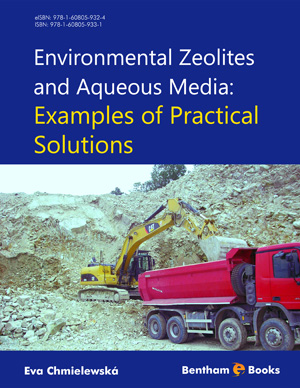About Book
Introduction
Environmental Zeolites and Aqueous Media: Examples of practical solutions brings to light the characteristic features of ion exchange and adsorption onto natural zeolite for environmental cleanup processes, particularly for water purification, zeolite`s present, past and future. This eBook emphasizes on the recent development in the synthesis and manufacturing of the advanced cost-effective organic and inorganic zeolite-based adsorbents.
Indexed In
Table of Contents
Some Retrospectives and Outlooks in Zeolite Science History
Page: 6-14 (9)
Author: Eva Chmielewská
DOI: 10.2174/9781608059324114010004
PDF Price: $15
Occurrence, Diagenesis and Crystal Structure of Zeolites
Page: 15-45 (31)
Author: Eva Chmielewská
DOI: 10.2174/9781608059324114010005
PDF Price: $15
Basic Research of Ion Exchange and Adsorption onto Zeolites in Aqueous Solutions
Page: 46-70 (25)
Author: Eva Chmielewská
DOI: 10.2174/9781608059324114010006
PDF Price: $15
Kinetic and Thermodynamic Studies for Phosphate Removal Using Natural Adsorption Materials
Page: 71-99 (29)
Author: Eva Chmielewská
DOI: 10.2174/9781608059324114010007
PDF Price: $15
Natural Zeolite - A Versatile Commodity-Some Retrospectives in Water Cleanup Processes
Page: 100-134 (35)
Author: Eva Chmielewská
DOI: 10.2174/9781608059324114010008
PDF Price: $15
Study of Ongoing Adsorption Phenomena on Clinoptilolite-Rich Tuff with the Immobilized Interfaces
Page: 135-199 (65)
Author: Eva Chmielewská
DOI: 10.2174/9781608059324114010009
PDF Price: $15


 Download PDF Flyer
Download PDF Flyer